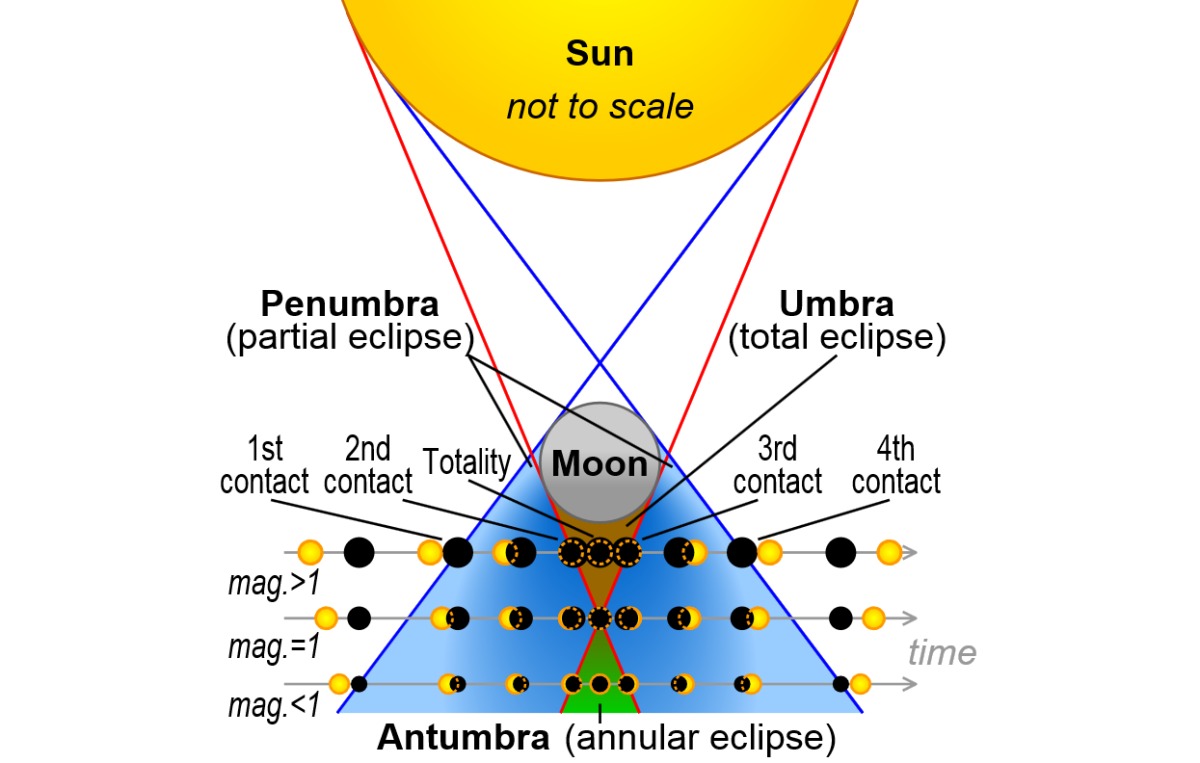
This year's eclipse season will begin with a bang with a hybrid solar eclipse on April 20, 2023. The rare astronomical event occurs just once every decade. The last one was on November 3, 2013, and the next one will not be until November 30, 2031. Unfortunately, the celestial phenomenon will only be seen in western Australia, East Timor, and eastern Indonesia.
What is a hybrid solar eclipse?

A solar eclipse occurs when the Moon passes between the Sun and the Earth, casting a shadow onto our planet. There are four types of solar eclipses. The most common is the partial solar eclipse where the Moon blocks out just part of the Sun. The second is an annular solar eclipse. Here, the Moon covers the center of the Sun, resulting in what is often called a "ring of fire." Then there is the total solar eclipse where the Moon blocks the entire disc of the Sun.
A hybrid solar eclipse is a combination of all three. Depending on their location, some skywatchers witness a total eclipse. Others can only see an annular or a partial one.
Eclipses come in pairs!
Disappointed with the hybrid solar eclipse's narrow path? Then you will be pleased to know that a solar eclipse is always followed by a lunar eclipse and vice versa. The celestial events usually occur within two weeks of each other during what is called an "eclipse season." Even better, every calendar year has two eclipse seasons. This means there will be three more eclipses in 2023.
Penumbral lunar eclipse (May 5, 2023)
The first eclipse season will end with the penumbral lunar eclipse on May 5, 2023. The celestial event is very subtle and hard to observe. It occurs when the Earth blocks only a small part of the Sun's light from reaching the Moon. The eclipse will be visible from Eastern Europe, the Middle East, Africa, Asia, and Australia.
Annular solar eclipse (October 14, 2023)
The second eclipse season of 2023 will kick off on October 14 with an annular solar eclipse. It will be visible in parts of the United States, Mexico, and many countries in South and Central America.
Partial lunar eclipse (October 28, 2023)
The 2023 eclipse season will end on October 28 with a partial lunar eclipse. It can be seen from Asia, Russia, Africa, the Americas, Europe and Antarctica.
Happy Viewing!
Resources: Space.com, Earthsky.com, NASA.gov
